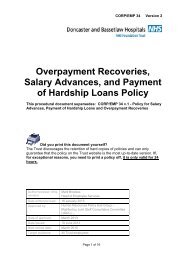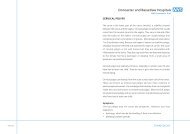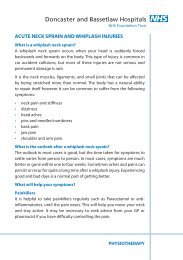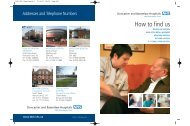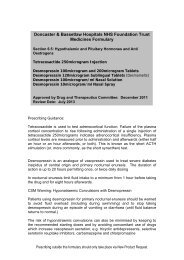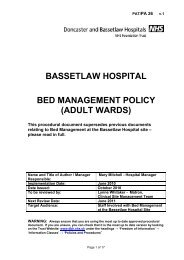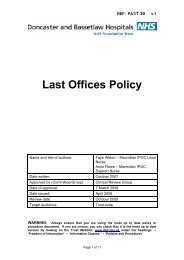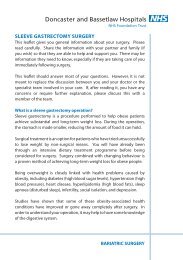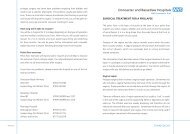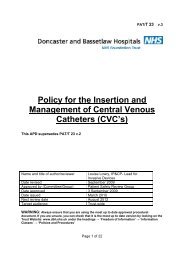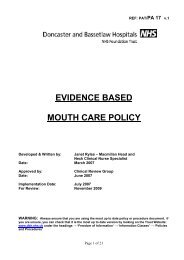VARIANT CREUTZFELDT-JAKOB DISEASE (vCJD) AND ...
VARIANT CREUTZFELDT-JAKOB DISEASE (vCJD) AND ...
VARIANT CREUTZFELDT-JAKOB DISEASE (vCJD) AND ...
Create successful ePaper yourself
Turn your PDF publications into a flip-book with our unique Google optimized e-Paper software.
PAT/IC 4 v.3<br />
9. CHILDBIRTH<br />
In the event that a patient with, or “at increased risk “ of CJD or <strong>vCJD</strong> becomes pregnant, it<br />
is important to ensure that patient confidentiality is properly maintained, and that any action<br />
taken to protect public health does not prejudice individual patient care.<br />
Childbirth should be managed using standard infection control precautions. The placenta<br />
and other associated materials and fluids are designated as low risk tissues, and should be<br />
disposed of as clinical waste, unless they are needed for investigation.<br />
10. SURGICAL <strong>AND</strong> ENDOSCOPIC PROCEDURES<br />
The CJD Incidents Panel has identified a number of individuals or groups who are at<br />
increased risk of CJD or <strong>vCJD</strong>. Arrangements should be in place to ensure that patients<br />
who have been notified that they are at increased risk of CJD/<strong>vCJD</strong> are identified before<br />
surgery or endoscopy to allow appropriate infection control procedures to be followed.<br />
Healthcare staff conducting pre-surgery assessments should receive instruction and/or<br />
training necessary to understand the reasons for answering the questions below and<br />
reassure patients and provide further information if needed . Information for patients is<br />
available from the CJD Incidents Panel website at:<br />
http://www.hpa.org.uk/CJDIncidentsPanel<br />
Also see “Transmissible spongiform encephalopathy agents : Safe working and the<br />
prevention of infection” - Annex J. Appendix B. Department of Health<br />
10.1 Assessment of CJD / v CJD risk<br />
i) Recommendation for all surgery and endoscopy patients<br />
All patients about to undergo any elective or emergency surgical or endoscopic procedure<br />
should be asked the question:<br />
“Have you ever been notified that you are at increased risk of CJD or <strong>vCJD</strong> for<br />
public health purposes?”<br />
Patient’s<br />
response<br />
No<br />
Yes<br />
Action<br />
Surgery or endoscopy should proceed using normal infection control<br />
procedures unless the procedure is likely to lead to contact with high risk<br />
tissue.<br />
Ask the patient to explain further – response should be recorded in medical<br />
notes.<br />
Special infection control precautions should be taken for all surgery or<br />
endoscopy involving contact with medium or high infectivity tissues (see<br />
below) and the Infection Prevention and Control team consulted for advice.<br />
Page 9 of 22



